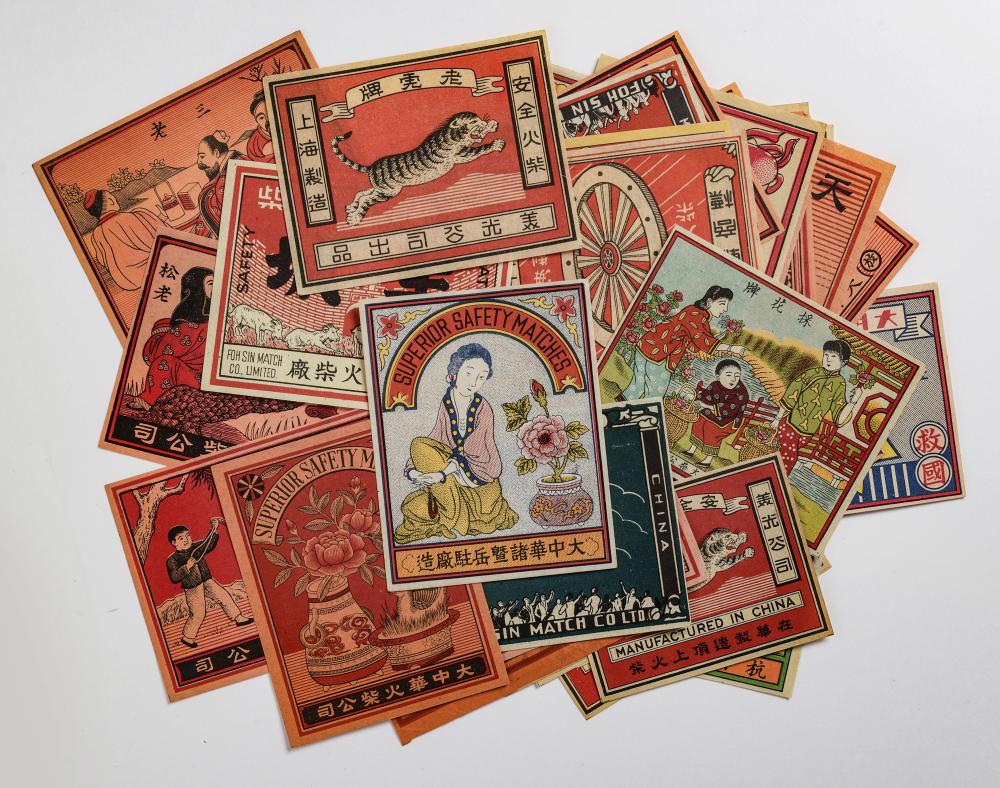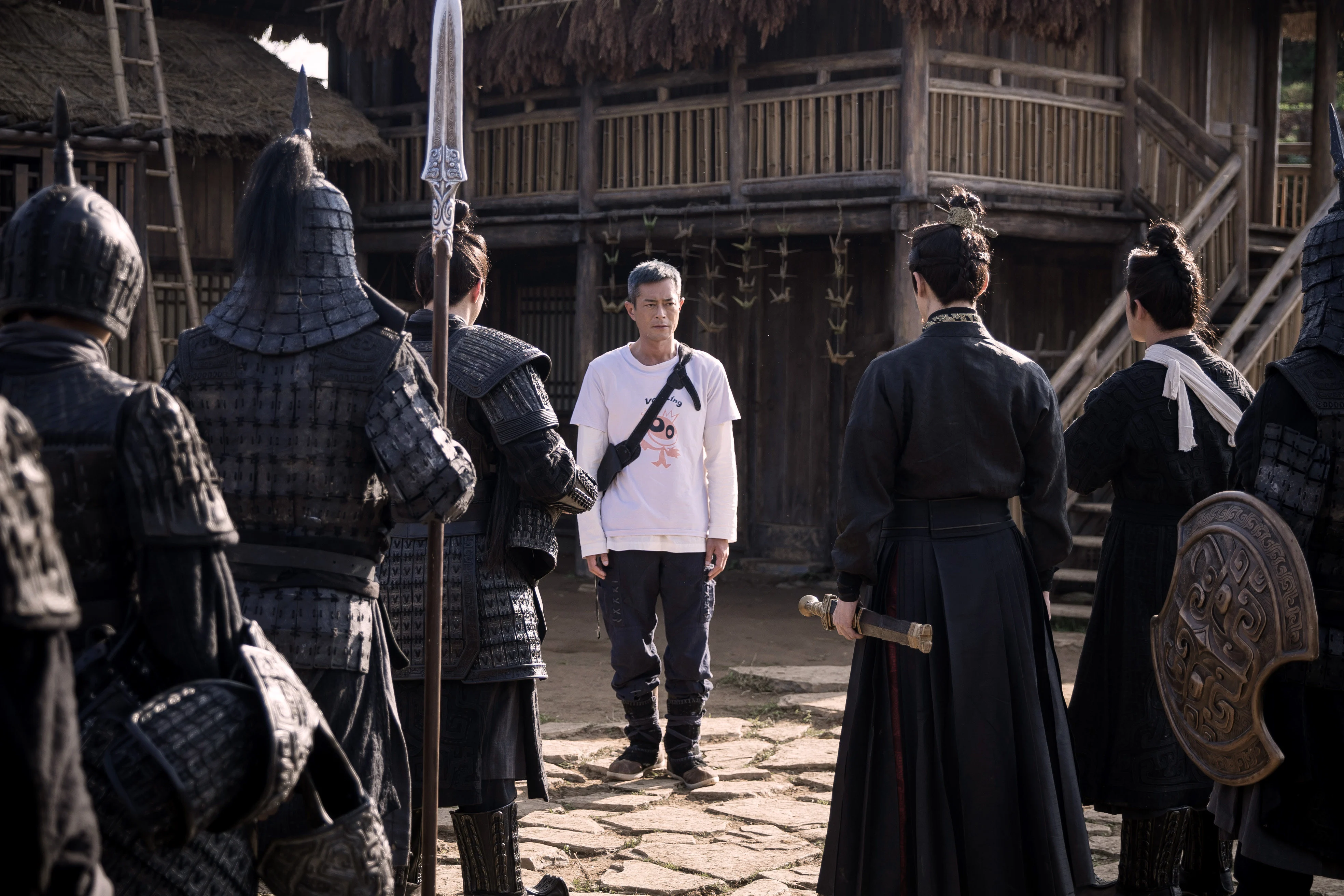* Warning: spoilers for Liu Cixin’s The Three-Body Problem and The Dark Forest below
Engineer-turned-author Liu Cixin brought widespread international attention to Chinese science fiction when his novel, The Three-Body Problem, became the first original Chinese book to win the prestigious Hugo Award. The opening story in the Remembrance of Earth’s Past trilogy, The Three-Body Problem chronicles humanity’s first contact with an alien empire, and this contact’s aftermath. The novel was published in 2006, and its widespread success inspired a surge of new Chinese science fiction, with over 200 new titles being published in 2012 alone. The Three-Body Problem wasn’t available in English until seven years later, when translator and author Ken Liu published a translation for Tor Books.

Since 2013, Chinese sci-fi has continued to garner international acclaim, with more and more volumes being translated into English and other languages. However, to understand why Liu was the first Chinese sci-fi author to rise to international prominence requires a deeper look at the history of Chinese science fiction.
The earliest example of the genre in China dates back to 450 BC, in the form of a Taoist story called Yanshi (偃师) about a mechanic who builds an automaton that can sing and dance. The genre didn’t arrive in its contemporary form until the early 1900s, when prominent authors like Lu Xun began translating popular sci-fi stories into Chinese as a way to promote technological innovation and scientific progress. The first original Chinese sci-fi work is believed to be an unfinished novel called Lunar Colony (月球殖民地小說), published in 1904 by an unknown author.
During the Republican era leading up to the Chinese Civil War and the creation of the PRC, various authors published science fiction stories, and some were included in literary publications created during the May Fourth Movement. Authors also began to experiment with science fiction as a form of social criticism, as in Lao She’s book Cat Country. After the establishment of the PRC, science fiction that drew heavily from Soviet writing and emphasized socialist realism became increasingly common, and other forms were suppressed.
Nevertheless, many new works were published with a focus on popular science in an attempt to promote the country’s “wonderful socialist future.” Unfortunately, like most forms of literature and culture, science fiction was suppressed heavily during the Cultural Revolution, as the publishing of anything but “revolutionary literature” was prohibited. Science fiction largely ceased to exist during this time period, but quickly returned in the late ’70s after the launch of China’s Reform and Opening-Up period. Many sci-fi publications rose to prominence during this time, and major writers like Ye Yonglie sold millions of copies of their books.
Despite its resilience, science fiction was once again wiped from China in 1983 during a series of anti-spiritual pollution campaigns. Finally, in 1991, Yang Xiao, a sci-fi publisher who had survived the campaigns by changing the name of his magazine to Strange Tales and only publishing nonfiction work, decided to host a sci-fi convention in Chengdu. Driven by the success of his convention, Yang Xiao changed his publication’s name to Science Fiction World, and scaled up production to a peak circulation of 400,000 during the mid-’90s. It was during this period that Liu Cixin rose to prominence alongside other writers like Wang Jinkang and Han Song.
Undoubtedly, science fiction’s visions of the future are heavily influenced by the writer’s cultural and historical background. William Gibson’s Neuromancer (1984), a foundational novel for the modern cyberpunk genre, draws heavily on wild-west imagery common in American literature, and bases much of the dialogue on subcultures that existed at the time. Like his Western counterparts, Liu pulls heavily from the contemporary issues facing China and the world to construct a narrative that engages with some of humanity’s deepest questions.
The Three-Body Problem opens during the Cultural Revolution, and follows Ye Wenjie as she establishes first contact with an alien race, the Trisolarans. Disillusioned with the intense political fervor of Chinese society and the failings of humanity as a whole, Ye sends a message to the Trisolarans, despite being warned that establishing contact would lead to the eventual invasion of Earth. Already, the story line of the trilogy is shaped by China’s intense modern political history. The rest of the book follows a single character’s discovery of the coming invasion, and finishes by revealing that the Trisolarans have sent 8-dimensional microscopic computers to sabotage the technological advances of human society.

Poster for forthcoming film adaptation of The Three-Body Problem
The next book in the trilogy, The Dark Forest, details the international response to the Trisolaran crisis. In the novel, Liu creates a compelling political dilemma drawn from the social issues we face as a globe today. As the UN tries to decide how the Earth can best respond to the coming invasion fleet, two main issues arise. The first is that of technological equity: in response to a global threat, the Third-world countries of the world ask that the most advanced technology be shared among all nations so that each nation can have an equal chance at responding to and surviving the coming invasion. This desire is largely driven by a mode of thought Liu dubs “Escapism,” which argues that Humanity’s best chance at survival is sending a subset of the population away to re-establish human society.
The proposal to share technology is predictably vetoed by the US and Russia, who believe that anyone trying to escape ought to be destroyed. In the face of an interplanetary invasion, Liu draws upon contemporary questions of equality and fairness to construct a realistic political situation. Just as we struggle with who reaps the benefits of technology today, Liu’s fictional society is hampered by predictable political struggles in the face of impending doom.
It is in the second novel that Liu Cixin develops his fictional framework of “cosmic sociology,” a field created by one of the main characters designed to study the interaction of galactic civilizations. Liu provides two axioms as the foundation of cosmic sociology: first, that survival is the primary need of civilization, and second, that civilization continuously grows and expands, but the total matter in the universe remains constant.
From these axioms, Liu argues that communication between different civilizations on the galactic scale is dangerous and unknown, so the logical response by a powerful society would be to eliminate any growing civilization before it could become a threat. It is these axioms that determine the initial contact between the Trisolarans and humanity, and which lead to the ultimate resolution of the second book. The main character threatens to broadcast the location of Earth and the Trisolaran home planet to the galaxy, so that even if the Trisolaran invasion succeeded, they would both eventually be destroyed by a more powerful galactic civilization.
To me, Liu’s cosmic sociology is reminiscent of a much older Western series: Isaac Asimov’s Foundation. The Foundation series chronicles the decline of humanity’s galactic empire and the attempt to lessen the severity of its collapse through the use of a newly developed social science able to predict the future of human society, called “psychohistory.”
Told from the perspective of an archival planet tasked with discovering how to avoid complete collapse of the galactic empire, Foundation deals with many of the same social questions as Liu’s Remembrance trilogy. How do we define individuality in the face of overpowering social forces? How do we maintain our morality when answering seemingly impossible questions? What is humanity’s place in the galaxy?
While an undeniable classic, when compared to The Three-Body Problem, Foundation feels lifeless and unimaginative. Whereas Foundation is concerned with an all-powerful galaxy-spanning human empire, The Three-Body Problem’s description of contact with an alien species looks at the universe with a fresh, open mind. Liu effectively turns the focus of his narrative outwards, towards humanity’s place in the universe, rather than inwards towards our own societal quirks and struggles. However, in describing contact with an alien race, Liu still manages to capture the best and worst of humanity in our response to an existential threat.
A lot of modern Western sci-fi takes a dystopian perspective on the future. Driven by the fear of vast technological change and a lack of knowledge about what’s coming next, it often feels as if writers and directors pull their punches or limit the scope of their work. For example, the ending of the recent blockbuster Interstellar felt contrived and sudden. The directors had the universe at their fingertips, and chose to end the movie with the magically cliched power of “love.” It feels to me that creators often lack the inventiveness or courage to tackle sci-fi’s hardest questions.
In contrast, Liu very much feels like a revitalization of the genre. His incredible imagination and the resilience inherent in Chinese science fiction bring a new optimism to the genre, and it is no mystery how he managed to breathe new life into the science fiction community in China, as well as the rest of the world.
















